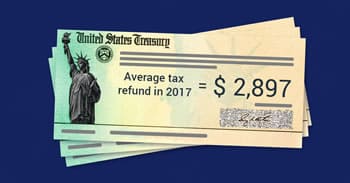What is Needed to e-file Tax Returns?

In 1986, the IRS began offering taxpayers the option to "e-file" (electronically file) their tax returns. In the first year, the IRS dedicated just one employee to help process electronically submitted tax returns. Since then more than 1.5 billion people have e-filed their federal returns.
There are a few things taxpayers need access to in order to e-file a return. Here are a three requirements to electronically file your return with us at E-file.
1) The taxpayer must have access to an internet accessible computer. They must utilize tax software provided by an authorized e-file provider or the IRS Free File forms.
2) Regardless of how a return is filed, the required personal information such as your name, address, social security number and date of birth is the same. What makes an e-filed return different is that the IRS may reject the return immediately if information such as the social security number is typed wrong or not valid.
3) To help protect against identity theft and verify the taxpayer's identity, the IRS requires either an Identity Protection PIN (IP PIN) or your prior year Adjusted Gross Income (AGI). The IP PIN is a six-digit number either supplied by the IRS or self-selected by the taxpayer. A taxpayer's AGI can be obtained on their previous year's tax return. For more on AGI visit our page here.
What Can't be e-filed
An increasing number of states are moving to an all-electronic tax system that requires all tax forms be e-filed. The IRS, however, still accepts paper returns mailed through the post office. In fact, certain types of tax returns can only be filed on paper. Most amended returns, filed on 1040X Forms, must be paper filed. Also, 1040 non-resident returns, and most prior year returns cannot be e-filed.
Simple Ways to Ensure the Fastest Return

One of the primary reasons why taxpayers prefer to e-file is they can receive their refunds faster. While there are many variables that can affect the speed of a tax refund, the IRS states it can issue refunds to taxpayers in as few as 10 days for those who e-file, compared with 21 days for those who file paper returns. Click here for more on the IRS refund schedule.
The primary reason why the pace of returns may be slowed, even for e-filers, is because the IRS detects there is an increase in fraud, and is scrutinizing more returns with additional screenings and reviews before being released.
Other than these unforeseen circumstances, there are two simple ways to help ensure refunds are processed quickly:
1.) File error free returns. Check and double-check that the information is correct. Make sure all Social Security numbers or Tax Identification Numbers for everyone on the return are right. Ensure all income is included. Is the address correct? While it helps to accurately calculate figures and sums, the IRS will do its own math, and adjust the return accordingly, if necessary.
2.) Sign up for direct deposit. The best, and fastest way, to receive returns is to have it electronically deposited for free into your bank account. The IRS allows filers to have money direct deposited into as many as three accounts. According to the IRS, eight of 10 taxpayers now get their refunds via direct deposit.
IRS Return Tracking Tool

Since at least 2011, the IRS has provided a tool to monitor the status of a taxpayer's refund. To monitor your status please see our Where's Your Refund tool.
Filers can also call the IRS Refund Hot-line at 800-829-1954, or the IRS TeleTax System at 800-829-4477, to receive a personalized update on the status of returns.
Please note, when checking on your refund, you may need to have information from your return available.
